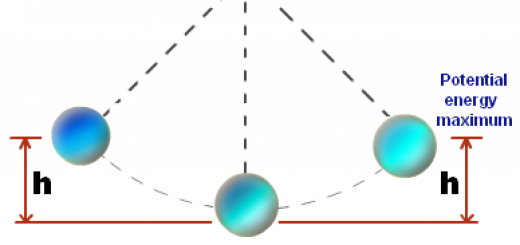Sensitive moving coil galvanometer, Direct current ammeter and Ammeter sensitivity
The electrical measurement devices are divided into types such as analog instruments and digital instruments, Moving coil galvanometer (sensitive galvanometer) is a device used to detect very weak current in the electric circuits, It is used to define the direction of these currents, measuring their intensities and determining their polarities.
Moving coil galvanometer
Moving coil galvanometer consists of a rectangular thin wire coil wrapped around a light aluminum frame mounted on a soft iron core, The frame is pivoted on agate bearings to facilitate its movement, The group rotates between poles of a U-shape magnet.
The permanent magnet poles are curved to provide a uniform radial magnetic field, thus the magnetic flux density is constant and perpendicular to the side of the rectangle irrespective of coil position.
A pair of spiral springs is used to serve as current leads to the coil and to control its motion as they return the coil to its original position when the current is cut, The coil and pointer rotate either in the clockwise or counterclockwise direction.
Idea of working
It depends on the torque acting on a coil carrying an electric current and moving in a magnetic field, So, due to the flow of an electric current in the coil, two parallel forces are generated, equal in magnitude and opposite in the direction act on the two sides of the coil, the forces produce a torque and the coil rotates around its axis.
When the electric current passes in the coil, the magnetic forces produce a torque that rotates the coil in the clockwise or counterclockwise direction depending on the current direction.
During the rotation of the coil, torsion is produced in the spiral springs against the torque acting on the coil of the galvanometer and increases as the point deflection angle increases.
When the torque due to the magnetic forces balances the torsion of the spiral springs, the pointer stops at a certain reading and indicates the industry of the electric current.
If the pointer in the middle:
- If the current in a certain direction so, the deflection occurs in a certain direction (say clockwise).
- Reversing the current direction will cause the pointer to deflect in the opposite direction (counterclockwise).
The moving coil galvanometer is not valid to measure the alternating currents, Because the resulting magnetic flux due to the alternating current is alternating, so, the direction of the torque changes each half cycle and the inertia prevents the coil to respond to this change, The zero scale of the moving coil galvanometer is in the middle to determine the current direction in its coil.
The moving coil galvanometer is not valid for measuring the high electric current intensities, Because the coil of the galvanometer can’t bear high electric current intensities that may cause melting of the coil and generates high torque that may disorder the coil.
The galvanometer sensitivity
The deflection of the pointer of the galvanometer is directly proportional to the torque which is directly proportional to the electric current intensity passing in the coil, So, the scale of the galvanometer is regular and if the angle of deflection of the pointer of the galvanometer (θ) and the electric current intensity (I), then, (I∝ θ).
θ / I = Constant value
This constant value is called the sensitivity of the galvanometer, The measuring unit of sensitivity is degree /micro Ampere (deg/μ A), It can be represented graphically as follows:
Slope = θ / I = Sensitivity of galvanometer
The galvanometer sensitivity (θ / I) is the scale deflection per unit current intensity passing through its coil.
To determine the electric current intensity passing in the galvanometer:
Current intensity ( I ) = Value of one division × Number of divisions of the pointer deflection
Applications of the galvanometer
The galvanometer can be converted into:
- Ammeter to measure large direct current.
- Voltmeter to measure the potential differences.
- Ohmmeter to measure the electric resistance.
Direct current ammeter
Ammeter is an instrument used to measure the direct electric current intensity and it is a sensitive galvanometer connected in parallel to a very low resistance called shunt resistance (Rs), or it is a device which through calibrated scale is used to measure directly the electric current.
Ammeter is used to measure large direct electric currents, Ammeter is connected to the electric circuit in series, So that the same current passing in the circuit, passes through it, It consists of a galvanometer, its coil (Rg) is connected in parallel to a very small resistance called shunt resistance (Rs) to increase the measuring range.
Importance of the shunt resistance
- It protects the galvanometer from being damaged due to the flow of most of the current through it.
- It increases the measuring range of the galvanometer.
- The shunt resistance draws a large value of the main current and permits only a small value of current to pass through the galvanometer, so, the resistance of the whole device becomes very small and does not affect the measured current.
The idea of working: The torque which is affecting a coil carrying electric current in a magnetic field.
The shunt resistance (Rs) is a small resistance connected in parallel with the galvanometer coil to convert it into an ammeter to measure larger electric currents.
If the shunt resistance of ammeter = 0.5 Ω, It means that the value of the resistance that is connected in parallel with the galvanometer to measure the electric current intensity by ammeter = 0.5 Ω.
Deduction of the shunt resistance
Rg, Rs are connected in parallel.
∴ Vg = Vs
∴ Ig Rg = Is Rs , Rs = Ig Rg / Is
I = Ig + Is
Is = I − Ig
Rs = Ig Rg / ( I − Ig )
Where: Ig is the maximum current of the galvanometer coil, Is is the electric current of the shunt resistance Rs, I is the total current intensity (Maximum current).
Ammeter sensitivity
Ammeter sensitivity (Ig / I) is the ratio between the maximum current measured by a galvanometer to the maximum current measured after changing into an ammeter.
Ig / I = Rs / ( Rs+ Rg )
When the Ammeter sensitivity = 1 / 10, It means that the ratio between the maximum current measured by the galvanometer to the maximum current measured after changing into ammeter = 1 / 10.
Magnetic force and Torque, Factors that affect the torque and magnetic dipole moment
Direct current voltmeter, Ohmmeter uses, importance and structure



